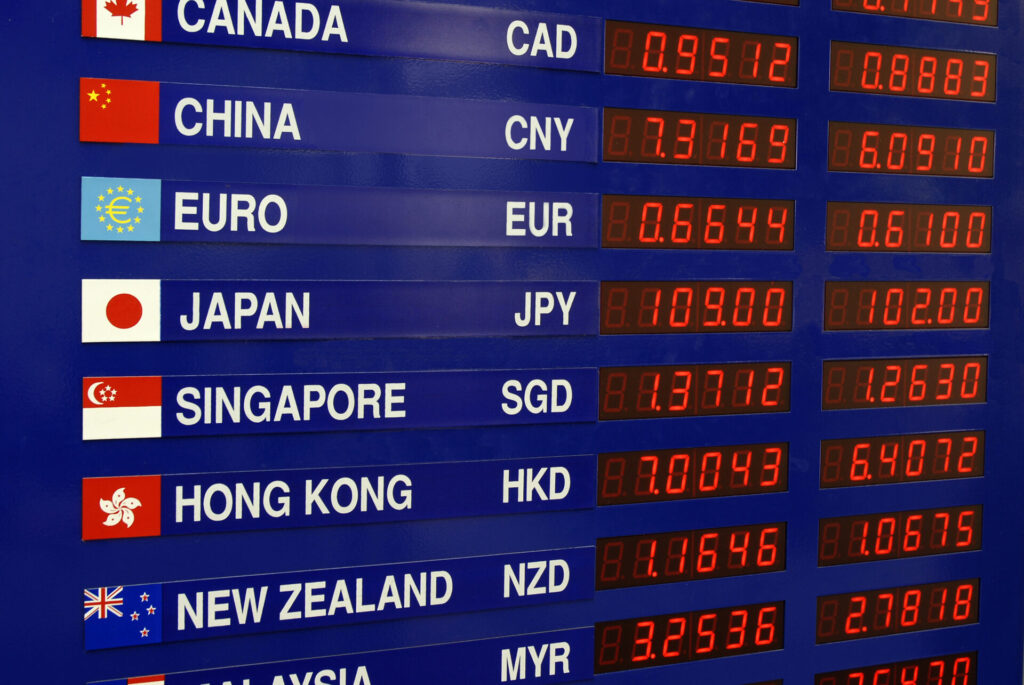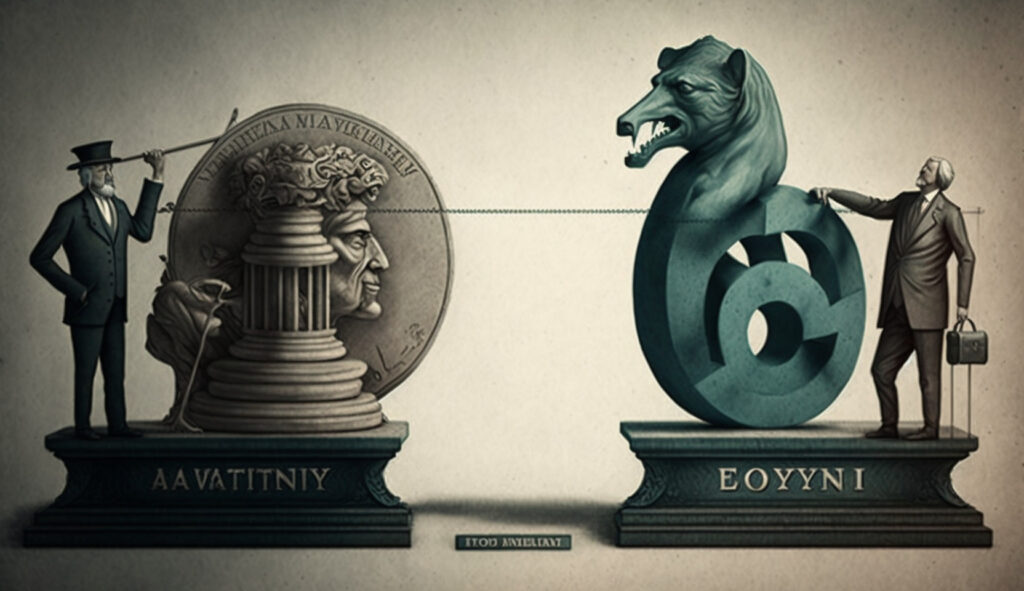
International Parity Conditions, comprising Covered Interest Parity (CIP), Uncovered Interest Rate Parity (UIRP), Forward Rate Parity (FRP), Purchasing Power Parity (PPP), and the Fisher Effect, form the backbone of international finance. These concepts demonstrate the connections between prices, interest rates, and exchange rates across countries. They help manage risk, predict currency movements, and evaluate economic health. However, real-world factors often disrupt their precise application. Combining these theoretical models with continual real-world economic analysis can guide market participants in making informed decisions.
Why Do International Parity Conditions Matter?
Well, they play a significant role in predicting changes in exchange rates and form the backbone of the foreign exchange market. They come into play in several scenarios. For example, consider international business. Understanding these concepts is crucial to making sound pricing, sourcing, and financial management decisions. Similarly, these conditions matter if you’re an investor or a financial manager. They can aid you in predicting currency movements, which can directly affect the return on your foreign investments.
Furthermore, policymakers and economists also find these conditions useful. They serve as a tool for evaluating currency values, setting monetary policy, and gauging a country’s economic health. In the domain of risk management, understanding these conditions is critical. Companies can leverage them to manage their exposure to exchange rate fluctuations, vitally important for international businesses.
However, while International Parity Conditions offer a structured way to think about exchange rates, they aren’t foolproof. Market participants need to supplement these models with ongoing analysis of current economic and market conditions, keeping an eye on economic indicators, financial market trends, and geopolitical developments. Since the market is constantly changing, participants must be willing to adapt. They should be prepared to revise their views and strategies when new information comes to light. This continual reassessment is a significant part of risk management in FX trading.
Navigating the FX market requires a balanced approach. Combining theoretical models with a keen understanding and analysis of real-world conditions is crucial. While there’s no guaranteed formula to predict exchange rates, these frameworks, and continual analysis can equip market participants to make more informed decisions. Let us examine each one of them in more detail. Let us have a look at each of the International Parity Conditions in more detail.
What Is Covered Interest Parity?
Imagine you have $1,000 to invest. Now, you have two choices. First, you could invest it right here in the U.S. Alternatively; you could choose to invest it in another country, say the UK. Here’s where we introduce a concept called “covered interest rate parity.” In essence, this principle proposes a straightforward idea. If you invest your money in the U.S., you should anticipate the same return as if you had invested in the UK. However, there’s a caveat to the UK investment. You must safeguard it against potential shifts in the exchange rate. This is what we refer to as “covered.” The covered part can be taken care of by a forward contract, for instance.
Now, let’s delve deeper into this. Given that you’re aware of the present exchange rate between dollars and pounds, and you also know the interest rates in the U.S. and the UK. With these pieces of information, you can work out a future exchange rate. This projected rate is what we term the “forward exchange rate.” You’d use this rate to convert your money back to dollars at the end of your investment period. Ideally, the forward exchange rate should be calculated in such a way that both the U.S. and the UK investments yield the same return. What this means is irrespective of whether you invested your money in the U.S. or the UK, you should earn the same amount in the end.
But what if you spot a loophole? What if the U.S. investment provides you with more return at the end of the day? Then, you could make a profit without any risk. You’d borrow money in the UK, convert it to dollars, and invest it in the U.S. Ultimately, you’d repay your UK loan at the end of the investment period. Sounds like a perfect plan, doesn’t it? But here’s the snag. The benefit vanishes as soon as people catch on and start using this strategy. This phenomenon is known as “arbitrage,” which helps maintain market equilibrium.
In a nutshell, “covered interest rate parity” acts like a rule in the market. It applies under normal circumstances and makes a number of assumptions for simplification: there are no additional costs to move money around; you can readily buy and sell currencies; and the investments are equivalent in terms of risk and liquidity. If all these conditions are met, then the returns on domestic and foreign investments should align. That’s the fundamental idea of covered interest rate parity at work.
What Is Uncovered Interest Rate Parity?
Unlike the Covered Interest Parity, this one doesn’t involve any protection or “cover” from changes in exchange rates. Let’s consider a scenario. Let’s say you have $1,000 again. You’re trying to decide whether to invest it in the U.S. or, for example, in Canada. Now, both countries offer different interest rates. Let’s say the U.S. offers a 2% interest rate, and Canada offers a 3% interest rate.
According to the UIRP concept, the difference in interest rates between the two countries should equal the expected change in exchange rates. If Canada’s interest rate is higher by 1% than that in the US, we’d expect the Canadian dollar to fall in value by about 1% compared to the U.S. dollar over the same period.
Why? Because if it didn’t fall, everybody would want to invest in Canada to benefit from the higher interest rate. This increased demand for Canadian dollars can initially push up its value. But as more and more people change their USD to CAD, the value of the Canadian dollar would start to decrease. That would balance out the extra gain from the higher interest rate.
The UIRP suggests that the Canadian dollar’s value should fall over time. It is necessary to balance out the higher interest rate. This means the extra gain from the higher interest rate in Canada gets offset by the loss incurred due to the fall in the value of the Canadian dollar when converted back to U.S. dollars. Remember, this is a theoretical concept. It doesn’t always hold perfectly in the real world due to various factors influencing exchange rates. It provides a framework for understanding the potential relationship between interest rates and exchange rate movements.
What Is Forward Rate Parity?
First, let’s figure out what a forward rate is. It’s an agreed-upon rate for swapping one currency for another in the future. This rate is fixed today. Why? To protect against future fluctuations in currency exchange rates.
Now, let’s tackle Forward Rate Parity. This iteration of International Parity Conditions states that the difference in interest rates between two countries should equal the difference between their currencies’ forward and spot exchange rates. But what does this mean exactly? Let’s explore this with an example. Suppose you’re an investor living in the US. You have two choices for investing $1,000 for one year.
First, you could invest in a US bank at a 2% interest rate. Second, you could convert your dollars to British pounds at the current exchange rate. Let’s say $1 equals £0.75. Then, invest your money in a UK bank at a 3% interest rate. Simultaneously, you could agree on a forward contract to change your pounds back into dollars at the end of the year.
According to the Forward Rate Parity theory, the forward rate should be set so you’re indifferent between these two options. So, the forward rate must account for the difference in interest rates between the US and the UK. But what if it doesn’t? What if the forward rate is higher than what the theory suggests? Here’s where things get interesting.
Using the forward contract, you could borrow money in the US, convert it to pounds, invest in the UK, and then convert it back to dollars at the end of the year. If you did this, you’d have more money than if you just invested in the US. In short, you’d make a risk-free profit. Sounds great, right? As soon as investors start doing this, the prices adjust to remove this opportunity. This is all thanks to supply and demand in the market.
So, the takeaway is this: this version of International Parity Conditions suggests that differences in current and future exchange rates should balance out differences in interest rates between two countries. This balance helps prevent easy, risk-free profits. Remember, this is an ideal condition. In the real world, other factors like transaction costs and risk can cause deviations from this theory.
What Is Purchasing Power Parity?
The term “Purchasing Power Parity” or PPP might sound complicated, but the idea behind it is quite simple. Basically, it’s about comparing how much a certain amount of money can buy in different countries. Imagine you’re on vacation. You have $100 in your pocket and are considering buying an apple. In the US, let’s say an apple costs $1, so you can buy 100 apples with your $100. Imagine you go on vacation to Canada and want to buy apples there too. The question is, how many apples should you be able to buy?
If PPP holds true, you should still be able to buy 100 apples. It doesn’t matter if you’re in the US or Canada. If $1 gets you an apple in the US, then converting your $100 into Canadian dollars should get you the same amount of apples in Canada. In other words, the value of your money in buying apples should stay the same no matter where you are.
This is the concept of Purchasing Power Parity. It says that the exchange rate between two countries should make the cost of goods and services the same in both places. If this isn’t the case, then something interesting happens. Let’s say that you find out you can buy 200 apples with $100 in Canada. What would you do?
You might start buying apples in Canada and selling them in the US for a profit! But as more and more people start doing this, the price of apples in Canada would rise. However, the price in the US would fall. Eventually, you could again buy the same number of apples with $100 in both countries.
So, in simple terms, PPP is about comparing the buying power of money in different countries. It’s the idea that the same amount of money should buy you the same amount of stuff, no matter where you are. But remember, this is a theoretical concept. In reality, many factors like taxes, transportation costs, and differences in product quality can cause prices to vary across countries.
What Is Fisher Effect?
This concept gets its name from economist Irving Fisher. The idea behind it is simple. Let’s imagine you save some money in a bank. The bank promises to give you a 5% return at the end of the year. You’re happy because you’ll have 5% more money next year, right? But what happens if prices go up in the meantime? Let’s say the prices of everything increase by 3% during the year. That’s called inflation.
With inflation at 3%, your 5% extra money doesn’t go as far as you thought. In fact, your ‘real’ gain is only 2%. How did we get that? Well, you take the 5% return and subtract the 3% inflation. That leaves you with a 2% real return. This concept is the Fisher Effect. It shows that the real return isn’t just the bank’s interest rate. You also have to take into account inflation.
What Is Real Interest Rate Parity?
Let’s say you live in the U.S. and want to invest your money for a year. You have two options: You can put your money in a U.S. bank that gives you a 5% return. Or, you can put it in a European bank with a 3% return. At first, you might think the U.S. bank is the better choice because it gives a higher return.
But, the Real Interest Rate Parity concept says you need to think about more than just the interest rate. You also need to consider the expected inflation in each country and how the exchange rate between the two currencies might change. Let’s say experts predict a 2% inflation rate in the U.S. and a 1% inflation rate in Europe. So, after accounting for inflation (using the Fisher Effect), your real return would be 3% in the U.S. and 2% in Europe.
However, what if experts also predict that the U.S. dollar will lose 2% of its value against the Euro? If that happens, your European investment will be worth more in U.S. dollars at the end of the year. And this could happen even though the interest rate was lower in Europe. In simple terms, Real Interest Rate Parity tells us to consider interest rates, inflation rates, and expected changes in exchange rates when deciding where to invest. But remember, this is a simplified example and just a theoretical concept. Real-world investing is more complex and involves many more factors and risks.
Conclusion
All these International Parity Conditions are connected, forming a web of relationships that tie together interest rates, inflation rates, spot and forward exchange rates, and price levels across countries. These parity conditions should all hold in an ideal world with no transaction costs, perfect information, and freely flowing capital.
In the real world, however, these conditions are not always perfectly met due to factors such as transaction costs, capital controls, and risk considerations. Nonetheless, they provide useful theoretical frameworks for understanding the complex dynamics of international finance. Now, let’s bring it all together. If all these international financial rules or “parity conditions” worked perfectly all the time, some interesting things would line up.
First, the expected change in the exchange rate – how much one currency is worth compared to another – would match the forward premium or discount. That’s just a fancy way of saying whether you’d gain or lose money by locking in an exchange rate now for use later. Second, it would also match the difference in interest rates between the two countries. That’s the “nominal yield spread.” And finally, it would match the difference in expected inflation rates between the two countries.
In simple terms, if all International Parity Conditions worked perfectly, there’d be no sneaky way to make consistent money from changes in exchange rates. Forward exchange rates – the rates you lock in now for later – would be bang on in predicting future exchange rates. So, there’d be no way to make money betting on those. If currencies with high-interest rates always dropped in value just as much as the difference in interest rates with low-interest countries, all markets would give you the same return over time when you adjust for currency changes. So, investors wouldn’t have any reason to move money around from one market to another based just on what’s happening with currencies.
When you want to stay ahead in the world of Forex and investments, follow Finansified for Foreign Exchange Market expert insights and advise to better inform you about international parity conditions that drive market dynamics for you to better predict exchange rates. Join us and transform your Forex trading approach with proven expertise.
Do The Smart Thing. Subscribe!
Get notified about our new articles and insights.



